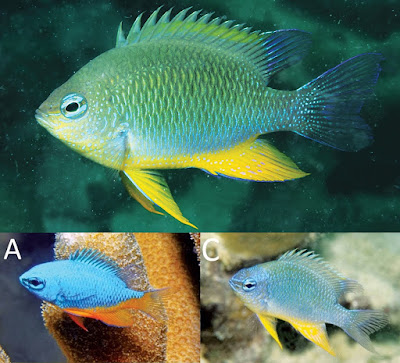 |
| Nyctibatrachus mewasinghi Krutha, Dahanukar & Molur, 2017 |
Abstract
A new species Nyctibatrachus mewasinghi is described from the Malabar Wildlife Sanctuary of Western Ghats of Kozhikode District, Kerala. The new species can be distinguished from known congeners based on small adult size, head equal to or slightly wider than long, less wrinkled dorsal skin with prominent granular projections, absence of dorso-lateral glandular folds, a ridge extending from the lip over the tip of the snout to between the nostrils bifurcate posteriorly producing an inverted ‘Y’, finger and toe discs well developed with dorso-terminal groove, cover rounded distally, third finger disc slightly wider than finger width and fourth toe disc almost equal to or slightly wider than toe width, presence of two palmar tubercles, moderate webbing and thigh, shank and foot almost of equal length. Molecular phylogeny based on two mitochondrial genes (ND1 and 16S rRNA) reveals that the species is genetically distinct from others within the genus, and is a sister taxon to N. athirappillyensis and N. kempholeyensis. Multivariate morphometric analysis clearly distinguishes the new night frog species Nyctibatrachus mewasinghi from N. athirappillyensis and N. kempholeyensis.
Keywords: 16S rRNA, additional records, discriminant analysis, Malabar Wildlife Sanctuary, molecular phylogeny, ND1 gene, new record, new species, Nyctibatrachus athirappillyensis, N. kempholeyensis.
 |
| Image 3. Nyctibatrachus mewasinghi sp. nov. in life. (a-b) Holotype (BNHS 5984, 22.1mm SVL), (c-e) male paratype (WILD-15-AMP-624, 22.3mm SVL). |
Nyctibatrachus mewasinghi sp. nov.
Diagnosis: Nyctibatrachus mewasinghi sp. nov. can be distinguished from all its known congeners by a combination of characters including: small adult size (21.4–23.0 mm SVL); head equal to or slightly wider than long (HW/HL ratio 1.0–1.3); internal back of eyes to eye length ratio 2.0–2.4; less wrinkled dorsal skin with prominent granular projections; absence of dorso-lateral glandular folds separated by an ‘X’ pattern on anterior half of back; a ridge extending from the lip over the tip of the snout to between the nostrils bifurcate posteriorly producing an inverted ‘Y’; finger and toe discs well developed; third finger disc slightly wider than finger width (FDIII/FWIII ratio 1.3–2.5); fourth toe disc almost equal to or slightly wider than toe width (TD/TW ratio 1.0–1.8); third finger and fourth toe discs with dorso-terminal groove, cover rounded distally; presence of two palmar tubercles; webbing small, reaching above the second subarticular tubercle on either side of toe IV; thigh nearly equal to shank (TL/SHL ratio 0.9–1.1); and shank nearly equal to foot length (SHL/FOL ratio 0.9–1.0).
Etymology: The species is named after Dr. Mewa Singh, Distinguished Professor (for Life), University of Mysore; J.C. Bose Fellow, Institution of Excellence, and Honorary Professor of Jawaharlal Nehru Centre for Advanced Scientific Research, Bengaluru. This species is in honour of his extraordinary contributions in behavioral ecology and primatology, and his immense contribution to the conservation of Indian primates.
Suggested common name: Mewa Singh’s Night Frog.
Distribution and habitat: Nyctibatrachus mewasinghi sp. nov. is known only from its type locality Peruvannamuzhi in Malabar Wildlife Sanctuary, Western Ghats of Kerala, north of Palghat Gap (Image 4). The species was seen in a stream with riparian cover (Image 5) running alongside a wall after the toe drain of the Peruvannamuzhi Dam. Males were observed calling on top of rocks and leaves around 19:00hr.
 |
| Image 5. Habitat at the type locality of Nyctibatrachus mewasinghi sp. nov. |
Keerthi Krutha, Neelesh Dahanukar and Sanjay Molur. 2017. Nyctibatrachus mewasinghi, A New Species of Night Frog (Amphibia: Nyctibatrachidae) from Western Ghats of Kerala, India. Journal of Threatened Taxa. 9(12); 10985–10997. DOI: 10.11609/jott.2413.9.12.10985-10997

















































































